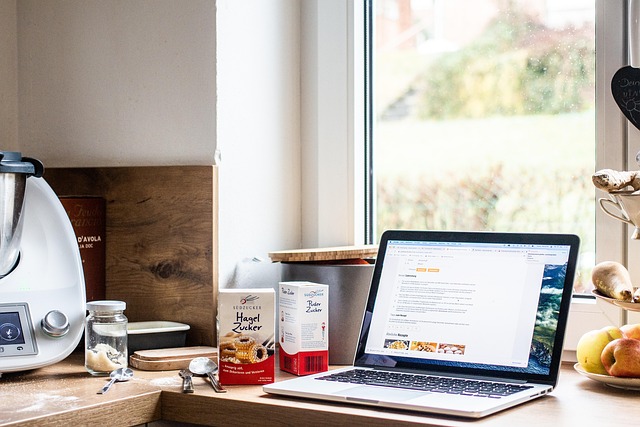Large Capacity Freeze Dryers: Information on Rent-to-Own Models for Home Use
Freeze dryers used to be inaccessible to most home users. Recently, larger-capacity models are showing up in garages and kitchens — thanks in part to flexible options like rent-to-own. This guide walks through how they’re being used and what to know before setting one up.

What Are Rent to Own Freeze Dryers and How Do They Work?
Rent to own freeze dryers operate under financing agreements where customers make monthly payments toward eventual ownership of the equipment. Unlike traditional purchases requiring thousands of dollars upfront, these arrangements spread costs over 12 to 36 months. The freeze drying process removes moisture through sublimation, where frozen water transforms directly into vapor, preserving food’s nutritional content and extending shelf life up to 25 years.
Large capacity home units typically process 7 to 12 pounds of fresh food per batch, accommodating family-sized portions of fruits, vegetables, meats, and prepared meals. The process involves three main phases: freezing the food to extremely low temperatures, creating a vacuum environment, and applying controlled heat to facilitate moisture removal without damaging cellular structure.
Available Freeze Dryer Financing Plans and Terms
Freeze dryer financing plans vary significantly among providers, offering different term lengths and payment structures. Most rent-to-own agreements include equipment maintenance, warranty coverage, and customer support throughout the rental period. Standard financing terms range from 18 to 48 months, with some providers offering early buyout options at discounted rates.
Interest rates for freeze dryer financing typically fall between 0% promotional rates for qualified buyers and 29.99% for extended terms. Many companies provide instant approval processes based on credit scores, employment verification, and income requirements. Down payment requirements usually range from zero to 20% of the total equipment cost, depending on creditworthiness and chosen payment plan.
Food Preservation with Payment Options: Benefits and Considerations
Food preservation with payment options makes home freeze drying accessible to budget-conscious families interested in long-term food storage. Monthly payments typically cost less than many families spend on groceries that eventually spoil, making the investment economically sensible over time. Preserved foods maintain original taste, texture, and nutritional value better than other preservation methods like canning or dehydrating.
The flexibility of payment plans allows households to begin preserving seasonal produce, bulk purchases, and leftovers immediately rather than waiting to save thousands for outright equipment purchase. However, total costs increase compared to cash purchases due to financing charges and interest. Consumers should calculate total ownership costs and compare them against potential food savings and convenience benefits.
Household Freeze Dryer Rentals: Short-Term vs Long-Term Options
Household freeze dryer rentals serve different needs depending on intended usage frequency and duration. Short-term rentals, typically lasting 30 to 90 days, work well for seasonal food preservation or trial periods before committing to ownership. These arrangements often cost $200 to $500 monthly plus security deposits.
Long-term rental agreements extending six months to two years provide lower monthly rates while maintaining upgrade flexibility. Some rental companies offer conversion options allowing renters to apply previous payments toward eventual purchase. Equipment maintenance, technical support, and replacement coverage typically come included in rental fees, reducing unexpected repair costs for users.
Flexible Freeze Dryer Payment Plans: Customization Options
Flexible freeze dryer payment plans accommodate various financial situations through customizable terms and seasonal payment adjustments. Some providers offer graduated payment schedules starting with lower amounts that increase over time, helping buyers adjust to equipment ownership costs gradually. Holiday deferment options allow payment postponement during expensive seasonal periods.
Agricultural and seasonal workers may qualify for payment plans aligned with harvest schedules or irregular income patterns. Student discounts, military pricing, and senior citizen rates provide additional savings opportunities for qualifying households. Early payment incentives, loyalty program benefits, and referral credits can further reduce total ownership costs through various promotional offerings.
| Equipment Model | Provider | Monthly Payment Range | Total Cost Estimate |
|---|---|---|---|
| Harvest Right Large | Harvest Right | $149-$399 | $4,295-$6,500 |
| Freeze Dry America Medium+ | Various Dealers | $199-$450 | $4,800-$7,200 |
| Commercial-Grade Units | Equipment Finance Co. | $350-$750 | $8,000-$15,000 |
Prices, rates, or cost estimates mentioned in this article are based on the latest available information but may change over time. Independent research is advised before making financial decisions.
Evaluating Total Cost of Ownership and Return on Investment
Freeze dryer ownership costs extend beyond monthly payments to include electricity consumption, maintenance supplies, and replacement parts over the equipment’s lifespan. Energy costs typically add $30 to $80 monthly depending on usage frequency and local utility rates. Vacuum pump oil changes, replacement filters, and periodic seal maintenance contribute additional ongoing expenses.
Return on investment calculations should factor preserved food savings, reduced grocery waste, emergency preparedness value, and convenience benefits. Families preserving garden harvests, bulk purchases, or expensive organic foods often recover equipment costs within two to four years. Those using freeze dryers primarily for convenience or occasional preservation may require longer payback periods but still benefit from enhanced food security and reduced waste.
Home freeze dryer rent-to-own programs provide practical pathways to food preservation technology ownership without substantial upfront investments. Careful evaluation of financing terms, total costs, and intended usage helps consumers select arrangements matching their financial capabilities and preservation goals. These flexible payment options make advanced food storage technology accessible to more households seeking long-term food security and reduced grocery expenses.




